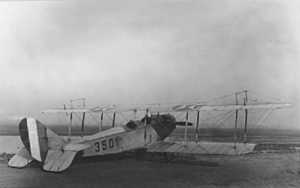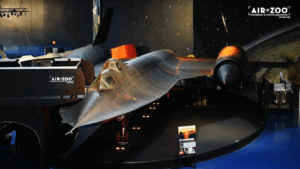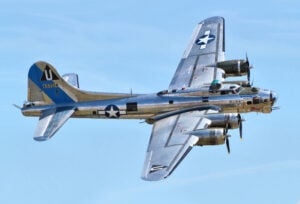How the Lancaster Turned The Tide

YouTube / Timeline - World History Documentaries
How did the Avro Lancaster, the legendary British bomber that helped turn the tide against Nazi Germany? Revered for its power, precision, and endurance, the Lancaster became the backbone of the RAF’s night bombing campaign, striking deep into the heart of Hitler’s Third Reich. From daring low-level raids to the famous “Dambusters” missions, this is the story of one of history’s most formidable warplanes and the brave crews who flew it into danger night after night.
War Machine
Far more lethal than the Halifax or Liberator, the Avro Lancaster was powered by four 1,460-horsepower Merlin engines. It measured 21 meters in length with a 31-meter wingspan, carried a crew of seven, and could haul an impressive 6,350 kilograms of bombs. The aircraft reached speeds up to 450 kilometers per hour and could climb to 7,500 meters.
Built from over 55,000 individual parts, the Lancaster entered production shortly after Germany invaded the Soviet Union on June 22, 1941. Over 7,000 were eventually produced. Designed to strike deep into Germany and ease the pressure on the Red Army, it became the backbone of Arthur Harris’s Bomber Command.
Turning the Tide of the War
As you approached the target,” recalled one gunner. “You think to yourself, how the hell are we going to get through?” The Lancaster proved devastatingly effective. In the legendary “Dambusters” raids, immortalized in the famous British film, Lancasters breached key dams supplying power to the Ruhr Valley. In July 1943, they struck Hamburg, targeting shipyards and residential areas—killing 40,000 civilians and forcing two million to flee.
The bombers also hit the V-2 rocket facility at Peenemünde, losing 40 aircraft and over 200 crew members in the process. One pilot later reflected, “You never knew whether the guy you were drinking with would be there tomorrow.” From 1943 onward, Lancasters played a central role in repeated bombing raids on Berlin. But not every mission succeeded. During a raid on Nuremberg in March 1944, the formation was ambushed by German fighters. “We were sitting ducks,” said one crew member. Ninety-six aircraft, including several Lancasters, were shot down, marking the raid as a costly failure.
As the war turned in the Allies’ favor, Lancasters helped pave the way for the D-Day landings in Normandy and continued to see action afterward.
In February 1945, toward the war’s end, 1,600 bombers, three-quarters of them Lancasters, attacked Dresden, a major transport and munitions center. A German survivor remembered the terrifying roar of engines and the sky glowing red through the night. Twenty-five thousand people were killed in that raid.
The returning Lancasters often came home battered, riddled with holes, and barely holding together. Yet, no matter how bad the damage or how desperate the situation, their crews trusted the aircraft to bring them safely back.




















